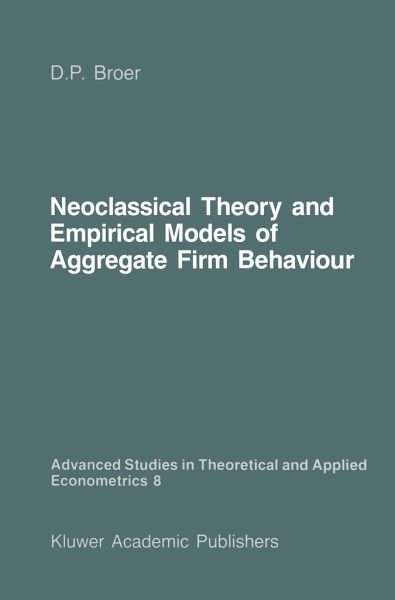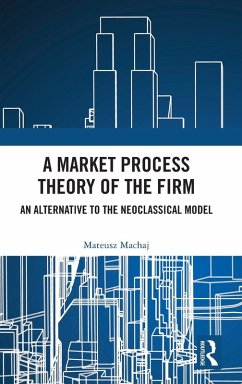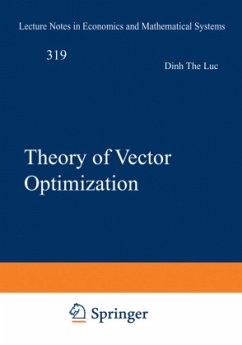
Neoclassical Theory and Empirical Models of Aggregate Firm Behaviour

PAYBACK Punkte
20 °P sammeln!
I. Introduction.- 1.1 Scope and significance.- 1.2 Methodological considerations.- 1.3 An outline of the remaining chapters.- II. Some elements from the neoclassical research programme of the firm.- 2.1 Introduction.- 2.2 Keynesian theories of the firm.- 2.3 The neoclassical programme.- 2.4 An outline of the structure of the models of this study.- III. A neoclassical model of a firm subject to a putty-putty technology.- 3.1 The market- and information structure.- 3.2 The production structure.- 3.3 The full model.- 3.4 Existence of an optimal policy.- 3.5 Necessary conditions for an optimal pol...
I. Introduction.- 1.1 Scope and significance.- 1.2 Methodological considerations.- 1.3 An outline of the remaining chapters.- II. Some elements from the neoclassical research programme of the firm.- 2.1 Introduction.- 2.2 Keynesian theories of the firm.- 2.3 The neoclassical programme.- 2.4 An outline of the structure of the models of this study.- III. A neoclassical model of a firm subject to a putty-putty technology.- 3.1 The market- and information structure.- 3.2 The production structure.- 3.3 The full model.- 3.4 Existence of an optimal policy.- 3.5 Necessary conditions for an optimal policy.- 3.6 Approximate solutions.- 3.7 Comparison with the stock adjustment specification.- IV. Vintage technologies and the theory of the firm.- 4.1 Introduction.- 4.2 The structure of putty-clay models.- 4.3 A general putty-clay model.- V Estimation and empirical testing of the putty-putty model.- 5.1 Discrete-time adaptions.- 5.2 The construction of the expectations.- 5.3 Estimation.- 5.4 Model specification tests.- 5.5 Model characteristics.- 5.6 Trends and fluctuations.- VI. Estimation and testing of the putty-clay model.- 6.1 Discrete-time adaptions.- 6.2 Estimation.- 6.3 Model specification tests.- 6.4 Model characteristics.- 6.4.1 Stochastic stability.- 6.5 Trends and fluctuations.- VII. Summary and conclusion.- 7.1 Summary.- 7.2 Conclusion.- List of symbols.- References.- Author index.












